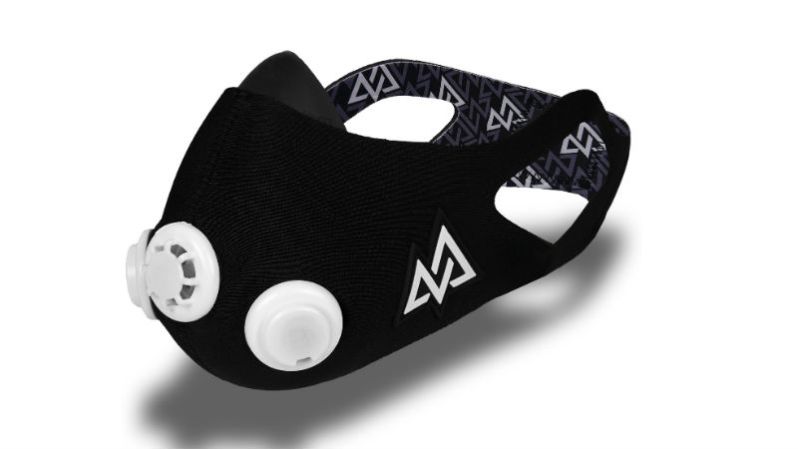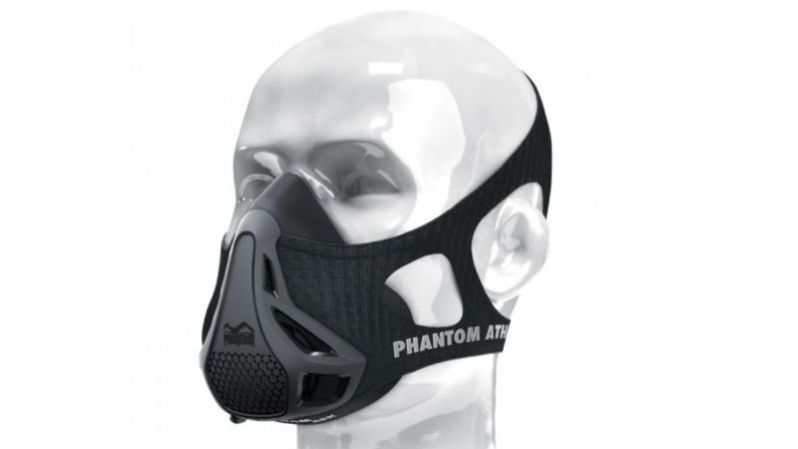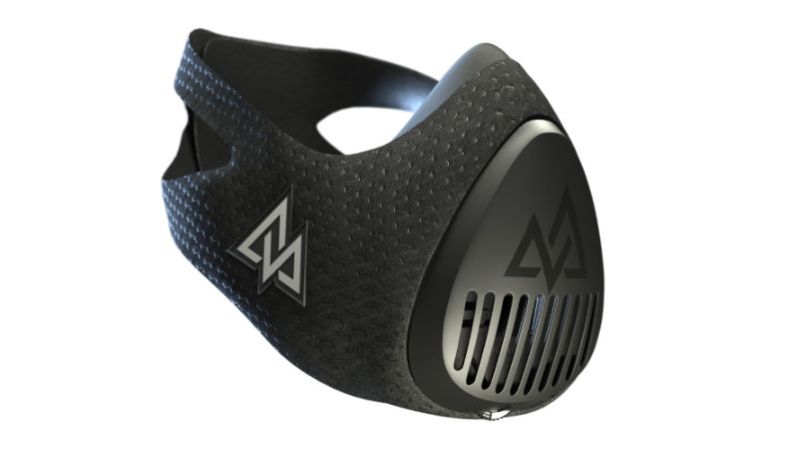Cardio is hardio.
Cardiorespiratory fitness is defined by the body’s ability to process oxygen, distribute it efficiently throughout the body, and maintain exercise intensity. Ever heard of VO2 max? That’s the measurement of the maximum amount of oxygen that an individual can use during intense or “maximal” exercise, aka the workouts that push your fitness farther.
Professional athletes and Olympians often look to improve their cardio and VO2 max by getting high — training in high-altitude, that is. Exercising at high-altitude has been proven to increase VO2 max, as well as generate other physiological adaptations that, well, make you faster, stronger, and fitter.
But unless you have the means to ditch work for a week to train in Boulder’s Flatirons or buy a bank-breaking hypo-barometric chamber for that marathon or high-elevation hike you’ve been planning, how can you run higher while staying low?
Answer: high-altitude training masks
High-altitude training masks, or simply elevation masks, give us non-athletes a means of improving our body’s ability to utilize oxygen and strengthen our respiratory muscles by simulating altitude training. How? These muzzles reminiscent of Bane (I mean, he was a super fit Batman villain, so they must work) minimize the amount of air you can inhale by covering your mouth and nose, leaving only certain vents and valves to control the intake. This should make your body learn to take deeper breaths and work with less oxygen. Even a brisk walk with a mask should make that afternoon run feel a little easier.
In 2017, two studies came to opposite conclusions about the effectiveness of these altitude/elevation training masks. One said these masks did not cause a significant increase in VO2 max within a subject group of male reserve cadets, while the other claimed the masks did increased oxygen uptake compared to subjects not wearing the masks.
In fact, you’ll find only polar responses to mask training, with many articles claiming they don’t do squat, while reviewers online swear by its stamina-boosting power.
John Serafano, exercise applications specialist with Training Mask, one of the dominant names in the biz, tells The Manual that their masks “balance your external and internal workloads and help you push you internal workload outside of the external workload of just running harder or faster.” In other words, you’re exercising on the inside as well as outside. As a a result, Training Mask recently flipped the script and renamed these altitude masks “respiratory training tools.”
Even better, Serafano says “the benefits of training with a mask are actually a lot more potent for beginners and intermediates than professional athletes,” claiming studies have been done correlating training in a mild hypoxic (reduced oxygen) environment to an increase in human growth hormones.
We’re not surprised, considering where the mask go its start. The concept began as an actual gas mask used by hardcore UFC fighters during training. The only problem: those masks would literally suffocate you. “The main goal was lung training, stamina, and endurance,” Serafano explains. “They’re a tool, not a quick-fix.”
The million-dollar question: Do they work?
Give them a try. We say, if there’s a potential an altitude training mask could make us the fittest guy at the gym, we’re game. Do they replicate the benefits of living and training at 5,500 feet? No. Instead of lowering the concentration of oxygen in the air, they act more as respiratory resistance devices, limiting the amount of air to strengthen the breathing muscles and improve breathing mechanics.
When purchasing a mask, do not go on Amazon or eBay and find the cheapest option. Many of these are knock-off masks may not be safe, Serafano warns. Here are three we’d choose from, and why:
Training Mask 2.0 – $50

The OG training mask forces you to breathe against a one-way valve that restricts inhalation, which causes you to naturally take a deeper and longer breath. Let’s say someone out of shape starts jogging; they breath harder and more rapidly, then too quickly, and, as a result, air is not cycling through the lungs. The mask does not allow you to do that at a fundamental level. You have to take a full breath in and a longer exhalation out. A portion of the exhaled air during each breath is not expelled, giving your next inhale a higher concentration of carbon dioxide. “That’s how it reduces oxygen content,” Serafano explains. You can change the caps to different restriction points. If you feel you really can’t breathe, just take it off. These reviewers loved the 2.0.
Phantom Training Mask – Starting at $122

If you see other masks that look like this one, it’s because they’re copies. This was the original design by Phantom. Equipped with a patent-pending PRS (Phantom Regulation System), this masks features different resistance levels that you can easily switch during training without taking it off (a big annoyance with other masks). The four levels of resistance, from Beginner to Extreme, mean you can constantly push your limits. Meanwhile, you’ll be breathing through only the best, most hygienic and anti-allergenic materials.
Training Mask 3.0 – $90

“There’s a fundamental need for respiratory training in general fitness and health,” says Serafano. “Which is why we needed a new mask design.” With the 3.0, much like Phantom’s model, you don’t have to change the caps. You also don’t breath completely against a valve because the mask uses air flow restriction, which still taxes the breathing muscles between modes but may feel less suffocating for beginners. Four levels make it so average exercisers, or someone in reasonably good shape, can get closer and closer to elite status.
Reebok Flexweave Altitude Training Mask
No, you can’t buy it yet, but this collaboration between. Reebok and U.K. design house MODLA is an entirely new kind of altitude training mask. Reebok Flexweave material and 3D-printed valve technology will create a more comfortable fit. “I do a lot of high-intensity training, so I’m interested in how such equipment works, functions, and can help improve performance,” says MODLA’s co-founder Jon Fidle. “But we also saw the potential in the aesthetic of the Flexweave material, to create something which would blend with the mask and align with the contours of the wearer’s face.”
Feature image courtesy of Training Mask/Facebook.


